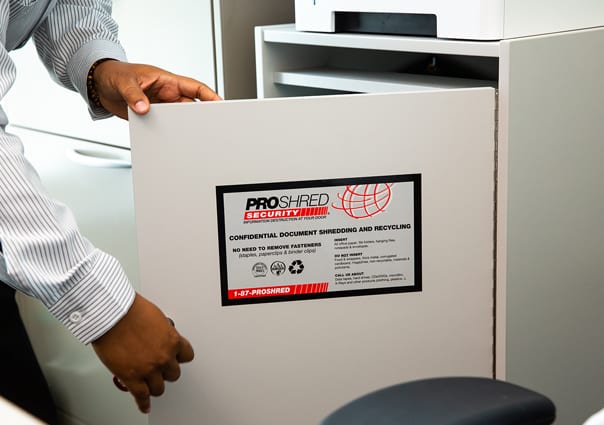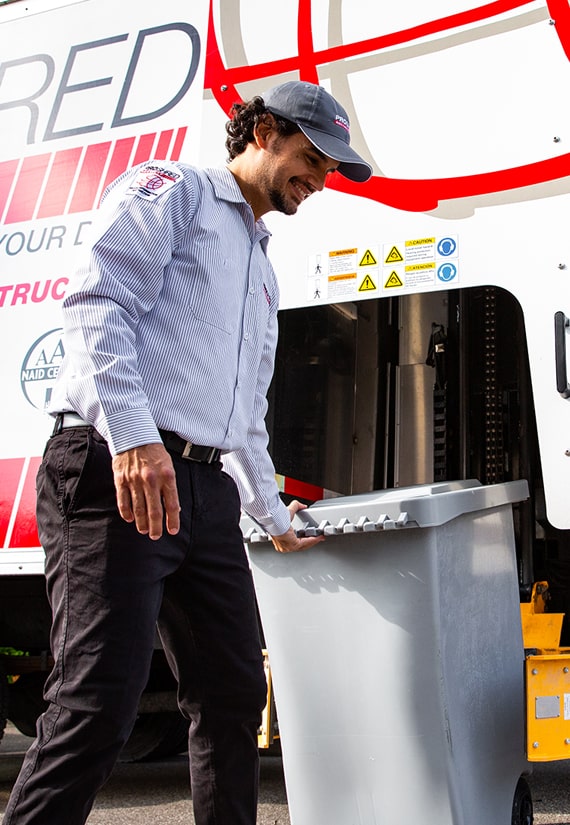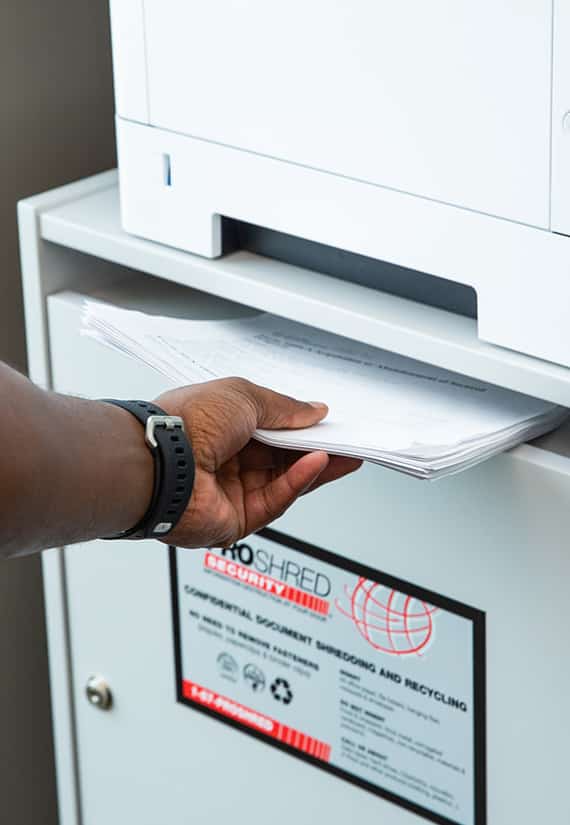From Destruction to Recycled: The Recycling Process


A Step-by-Step Look at Milwaukee's Recycling Process
Source: Recycle More Wisconsin
- Residents and commercial businesses dispose of their recyclable materials in marked bins
- Municipal waste trucks come and pick up the disposed of recyclables.
- Each truck returns to the recycling center where they weigh in and then dump all materials onto a huge loading device is known as a “tip floor.”
- The tip floor and a front-end loader push all the materials onto a conveyor belt, where the travel towards the sorting lines.
- Recycling center workers directly sort through the materials based on their chemical makeup. For instance, cardboard is separated from newspaper and different plastic grades are separated from one another.
- Paper materials are sorted and bailed according to type. Plastic bottles, cans and packaging are further sorted mechanically.
- The glass is manually sorted by color for shipment to glass factories, who can melt down the glass, chemically treat it then reintroduce it into new glass products.
- Plastics are sorted by type and, occasionally, color. Non-recyclable trash and food materials are removed.
- Eventually, all plastics are baled according to type.
- Full loads of shipping containers or truck trailers are hauled away to various manufacturers of recycled goods products. Milwaukee sends recyclable materials to a variety of processing centers both in Wisconsin and abroad, sometimes going as far as Huangpu, China.
A Look at Paper Recycling
Every recyclable material has a different process for breaking down waste into reusable products. Since we at Proshred® Milwaukee directly contribute to paper recycling, we will look at the process of how shredded paper bales become new paper products.
- Paper shreds are further shredded to create an ultra-fine substrate
- Water is added to this substrate to form a slurry known as paper pulp
- Chemicals are added to remove inks, dyes and unwanted elements from the paper fibers
- Clean, un-inked paper pulp is dripped onto a mesh screen, forming a large, mostly even sheet of wet pulp. The pulp travels along the screen as water drips underneath.
- Water is further removed and the pulp mass is pressed by running the conveyor belt through a series of rollers
- Rollers gradually add more pressure along with heat and air drying as the mass of pulp becomes more paper-like
The final, finished paper is spun into rolls to be used for further processing into materials like newspapers, toilet tissue, paper towels and even copier paper

What People Are Saying About Proshred®
Hi John,
I wanted to circle back with you about last week’s Horicon Bank Shred Events in Menomonee Falls and Grafton. Both went great and raised... read moreHi John,
I wanted to circle back with you about last week’s Horicon Bank Shred Events in Menomonee Falls and Grafton. Both went great and raised a good amount of donations for the two charities we were supporting. Having two trucks in Grafton was a game changer! We also wanted to give a HUGE shout out to the Proshred staff who were with us at these events with the trucks (Nick and Mitch). They were super helpful and really stepped in when needed. Which was greatly appreciated.
Thank you, thank you, thank you! read lessBecki S.Horicon Bank10/03/2024Your Company is at the top of my list for the best service ever!
I was so pleased to have hired your Company!
I’m telling everyone I... read moreYour Company is at the top of my list for the best service ever!
I was so pleased to have hired your Company!
I’m telling everyone I know how superb and satisfying it was to hire such a fantastic Company! A very satisfied customer indeed!
read lessTerry J.10/02/2024John and his team are so amazing to get a phenomenal job. I really appreciate your team. I appreciate you. I appreciate our partnership. Thank... read moreJohn and his team are so amazing to get a phenomenal job. I really appreciate your team. I appreciate you. I appreciate our partnership. Thank you for another amazing year. I look forward to working with you next year again. read less
Shannon H8/06/2024Hi John,
Mitch was here to pick up the shredding and did a great job. Mitch was very helpful in taking our shred bin to his... read moreHi John,
Mitch was here to pick up the shredding and did a great job. Mitch was very helpful in taking our shred bin to his truck! I love working with companies that have employees that like their jobs! Mitch is the best!
Thank you, read lessAlicia B.7/02/2024John,
I just wanted to say thank you & how pleased we were with your employee that came here on Friday to do the shredding of... read moreJohn,
I just wanted to say thank you & how pleased we were with your employee that came here on Friday to do the shredding of all our stuff. He was very professional, fast and kind.
Thank you again! read lessTracy EGilbank Construction5/21/2024I want to let you know that it’s been great working with you and your team. Your staff in the field have been very friendly... read moreI want to let you know that it’s been great working with you and your team. Your staff in the field have been very friendly and professional and I will highly recommend your company to anyone who should ask. read less
Amy3/14/2024I want to say what a nice experience we had this past Tuesday with the member of your shredding team that came. She was... read moreI want to say what a nice experience we had this past Tuesday with the member of your shredding team that came. She was very professional and efficient and a delight to have helping us! We appreciate kind, thoughtful people like Sandra
read less
Lindsey C10/10/2023

